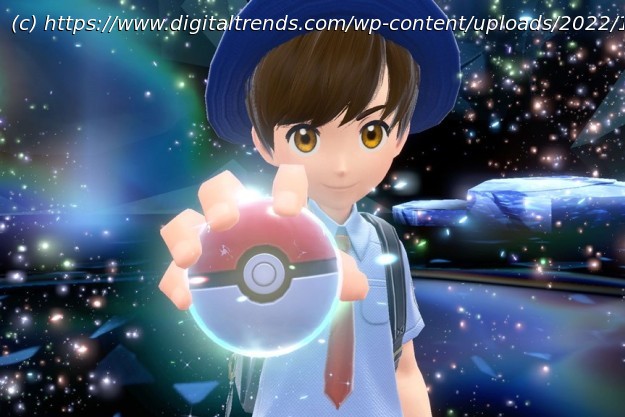Pokémon Scarlet and Violet sure don’t look pretty, but open-world freedom turns out to be exactly what the monster-catching series needed.
Before playing Pokémon Scarlet, I didn’t realize how little freedom I truly had in a Pokémon game. Sure, I had the power to pick my monster party and customize it with moves and items, but that’s usually where my player agency ended. No matter what region my adventures took me to, I usually found myself following a maze-like map of routes, caves, and towns that spit me out at the Elite Four. The creatures I could add to my party were laid out for me in a careful order, while forced battles against wandering trainers would make sure that my party was always at the right level to tackle whatever gym leader I was predestined to beat next.
I’d been biking with training wheels for 26 years.
For perhaps the first time in the series’ history, Pokémon Scarlet and Violet takes down the guardrails (or at least pretends to convincingly enough). Developer Game Freak trusts players to carve their own path through the open-world Paldea region, even if that means letting them walk into a battle entirely unprepared. More than all of the big-picture formula shake-ups, it’s that psychological shift that proves to be this generation’s most important innovation. Though the bike maywobble, the training wheels are finally off.
Pokémon Scarlet and Violet is a real step forward for a series that’s been locked in a holding pattern for well over a decade. The open-world pivot successfully reinvigorates a stale premise by giving trainers more control over the pace and difficulty of their journey. Like every recent Pokémon game, however, deteriorating tech and half-hearted experimentation still makes it feel like we’re five years away from the franchise’s true return to glory.
In Pokémon Scarlet and Violet, players don’t just assume the role of another young trainer looking to be the very best. Instead, the stories center around a student who’s just been enrolled in Paldea’s oldest university (the Naranja or Uva Academy, depending on which game you’re playing) and sent off on an independent study. Over the course of the journey, they’ll have to complete 18 tasks across a fully open map, which includes beating eight gyms, tracking down giant titan Pokémon, and shutting down bases belonging to the villainous (or perhaps misunderstood) Team Star.
It’s a cute setup that works on both narrative and game design levels. When it comes to the former, the framework creates some fun presentation touches that actually put me in that student headspace. The Pokédex is laid out like an adorable collection of textbooks, with volumes for each creature I catch. Tutorials are delivered through optional classes where I’m quizzed on different subjects via midterm and final exams. Even the “independent study” wording itself puts me in the mindset of a kid on a school assignment, rather than that of the interchangeable “trainers” that have starred in previous installments.
Most of all, I appreciate how the premise allows Game Freak to better tailor its storytelling to younger players. Rather than focusing on a sweeping, lore-heavy narrative with world-ending stakes, Scarlet and Violet’s three primary quests create space for more sincere stories about the Academy students. The Team Star quest, for instance, isn’t so much about vague bad guys trying to steal Pokémon or take over the world. Instead, it’s a bullying narrative that’s tackled with nuance and sincerity. Game Freak makes a firm choice about its core audience here, one that it’s been scared to commit to for most of the series’ life span. The decision to speak to childhood struggles makes for a more focused story with some actual emotional depth.
As an open-world motivator, the narrative setup serves as a good way to let players get lost in a giant map rather than locking them into a golden path. Objectives can be tackled in any order (sort of), which offers a level of freedom that’s never been present in a mainline Pokémon game. Remember the at-the-time special moment in Red and Blue where you first arrive at Saffron City and have the option to either tackle the fighting dojo or infiltrate the Silph tower? Scarlet and Violet is that choice turned into a full game.
Home
United States
USA — software Pokémon Scarlet and Violet review: radical reinvention sparkles in spite of tech...






